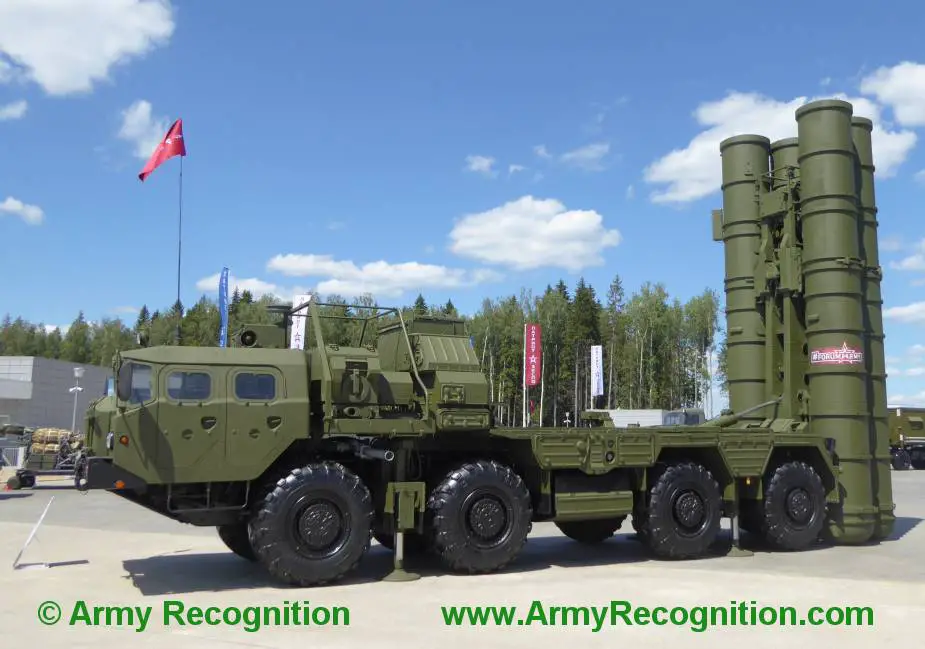The Russian Ministry of Defense throws S-400 Triumf (NATO reporting name: SA-21 Growler) long-range air defense systems, Buk-family (SA-17 Grizzly) medium-range surface-to-air missile (SAM) systems, and Pantsir-S (SA-22 Greyhound) self-propelled anti-aircraft gun-missile (SPAAGM) systems in a structured air defense network.
Follow Army Recognition on Google News at this link

S-400 Triumf air defense system (Picture source: Army Recognition)
The components of the new systems in various configurations are intensively tested during various exercises. On March 23, the Russian military used the combination of S-400 and Pantsir-S during an exercise in the Arctic. The Triumf system was playing the main role, while the Pantsir-S were covering the close-in areas of the S-400s.
When it comes to engaging targets at medium and long ranges, the above-mentioned system comprises S-400 and Buk-family air defense assets. On March 18, this combination conducted a live-firing exercise at the Telemba range in Buryatia and engaged aerial targets, which were imitated by the Saman and Armavir aerial vehicles, at long ranges. The trio comprising S-400, Buk-M2/M3 SAMs, and Pantsir-S allows covering any target range and altitude in an effective manner. These air defense assets can be supported by the Tor-M2 (SA-15 Gauntlet) short-range air defense weapons.
The S-400 is designed to engage strategic aircraft and tactical aerial systems, ballistic missiles, hypersonic threats, and other air attack assets in an electronically contested environment. The Triumf engages aerodynamic and ballistic targets at distances of up to 400 km and up to 60 km, respectively. The S-400’s target engagement altitude lays between several meters and several dozen kilometers. It should be mentioned that the system engages ballistic targets flying at a speed of up to 4.8 km/s.
The export-oriented modification of the Triumf shoots down ballistic targets at a range between 5 and 60 km, with target engagement altitudes laying between 2 and 25 km.
Such performance provides the Triumf with a positive market outlook. Compared to its closest competitor, the U.S.-made Patriot PAC-3 (Patriot Advanced Capability 3), the S-400 engages almost twice as many aerial targets (the PAC-3 keeps its eye at some 40 aerial objects) and has an advantage in terms of tracking (the PAC-3 tracks some 125 aerial targets). At the same time, the Patriot is a strong peer-to-peer market player and should not be written off: it is an efficient system, which is capable of dealing with most aerial threats on the modern battlefield
According to the Director of Russia’s Federal Service for Military-Technical Cooperation (FSVTS) Dmitry Shugayev, Russia now offers a multifaceted air defense network in the global market.
© Copyright 2021 TASS / Army Recognition Group SPRL. All rights reserved. This material may not be published, broadcast, rewritten or redistributed.















